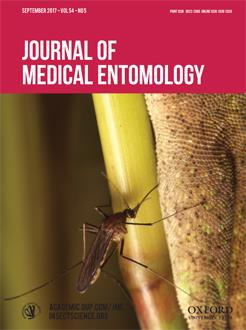The Imamoglu district located in the southeast of Adana province in Turkey is an endemic focus of cutaneous leishmaniasis (CL) owing to dominancy of Phlebotomus tobbi, which is a probable vector of Leishmania infantum. About 11.26% of CL cases reported each year are from Imamoglu, Adana, and between 2008 and 2015, 223 cases of CL were reported. Leishmania infantum, which may be transmitted by P. tobbi, Phlebotomus neglectus/syriacus, and Phlebotomus perfiliewi, is referred as leishmaniasis factor in Adana. Thus, the aim of this study was to map the risk areas for each sand fly species using remote sensing images based on environmental factors and geographical characteristics. Two field works in two consecutive years (2013 and 2014) were conducted and six sand fly species were caught, four of which were identified as probable vector species. Field work results were compared with environmental data obtained from satellite images by univariate and binary logistic regression in PASW. ARCMAP 10.2 software was used for geographical adjustments, creating a database and estimating a risk model by using previous risk value formulas. The results showed that the distribution of three probable leishmaniasis vectors (P. tobbi, P. neglectus/syriacus, and P. perfiliewi) was associated with normalized difference vegetation index (NDVI), digital elevation model (DEM), night-time land surface temperature (LSTNIGHT), and emissivity (EMIS31) values, which were related to the local authorities, who take these findings into account when deciding on high risk areas for CL.
How to translate text using browser tools
13 May 2017
Geographical Information Systems in Determination of Cutaneous Leishmaniasis Spatial Risk Level Based on Distribution of Vector Species in Imamoglu Province, Adana
Hakan Kavur,
Ozan Artun
ACCESS THE FULL ARTICLE
It is not available for individual sale.
This article is only available to subscribers.
It is not available for individual sale.
It is not available for individual sale.

Journal of Medical Entomology
Vol. 54 • No. 5
September 2017
Vol. 54 • No. 5
September 2017
cutaneous
geographical information system
leishmaniasis
risk model
sand fly




